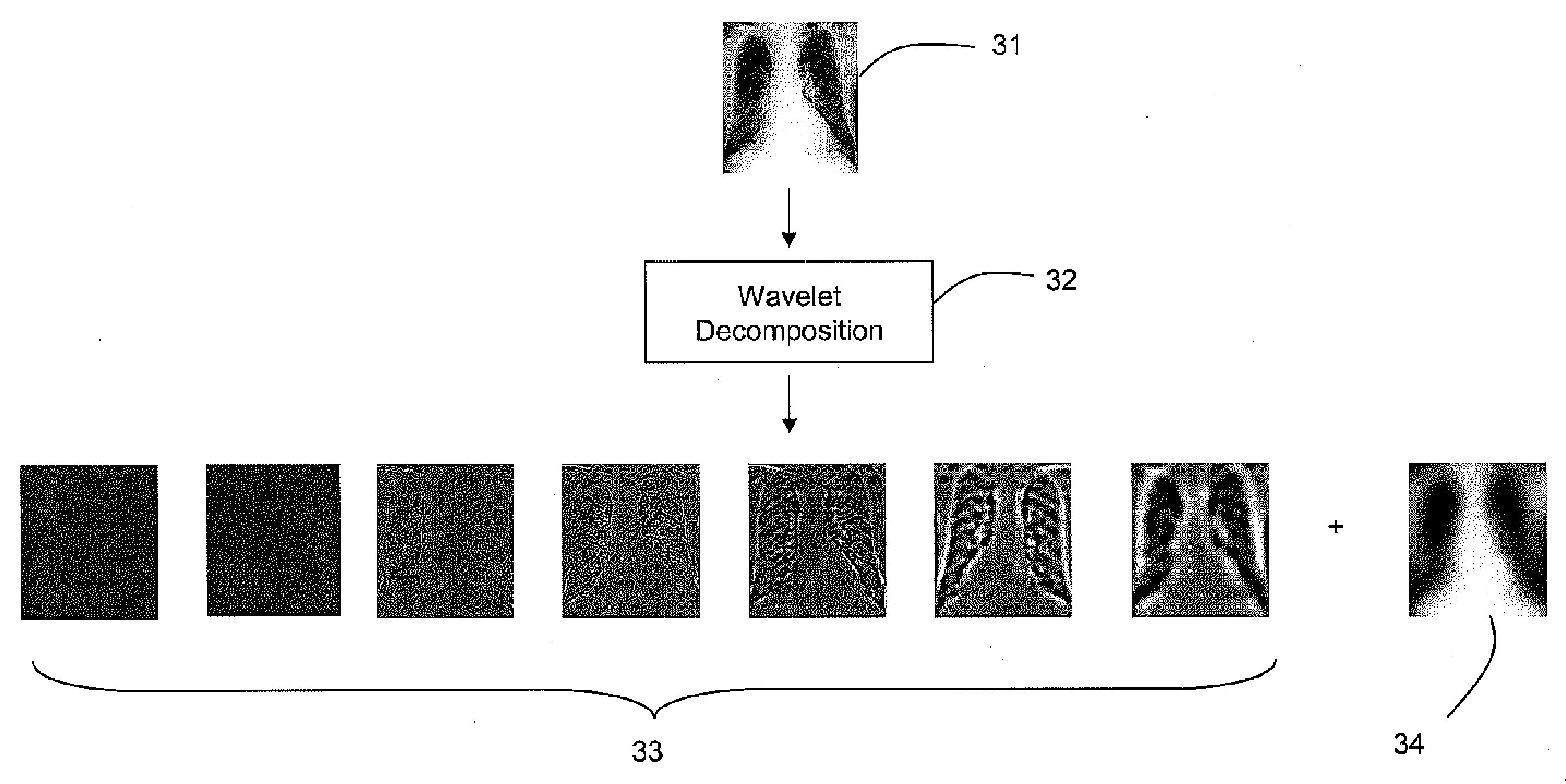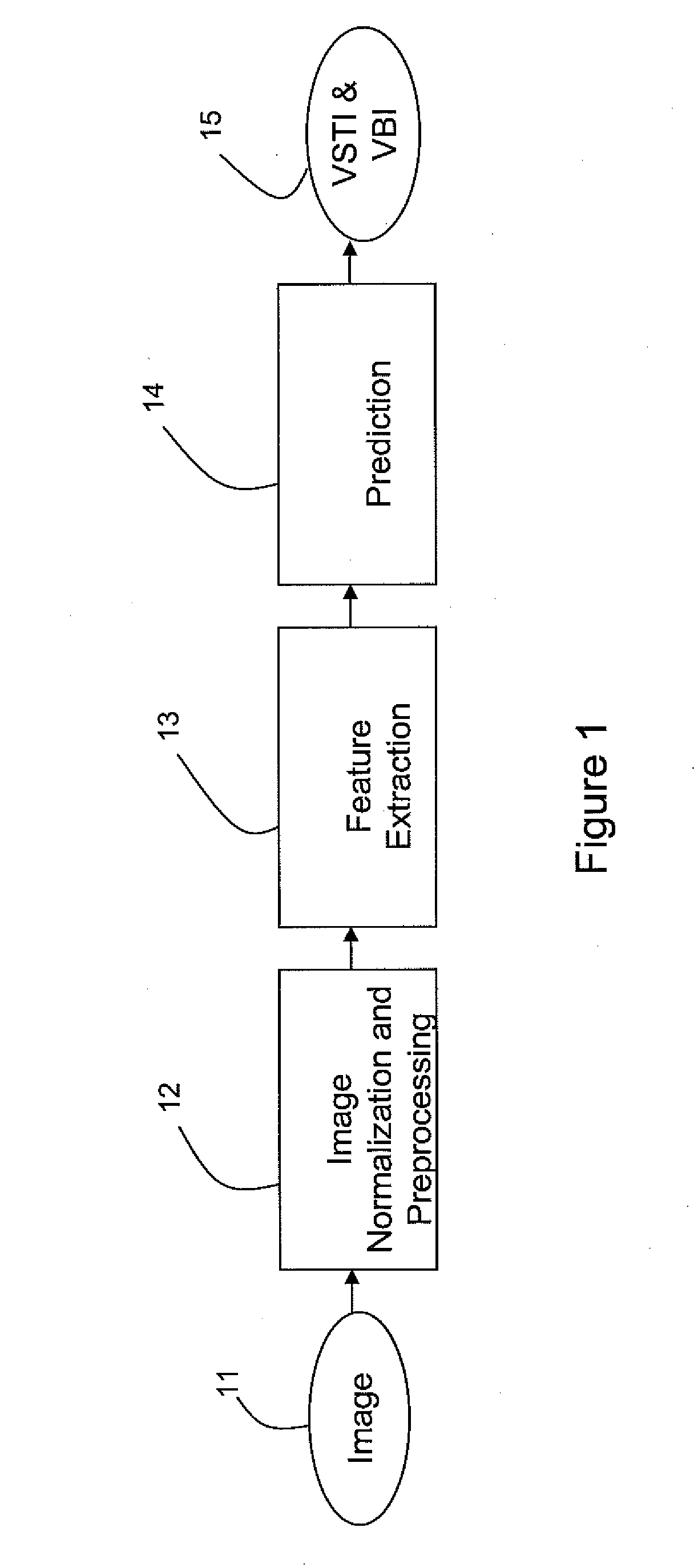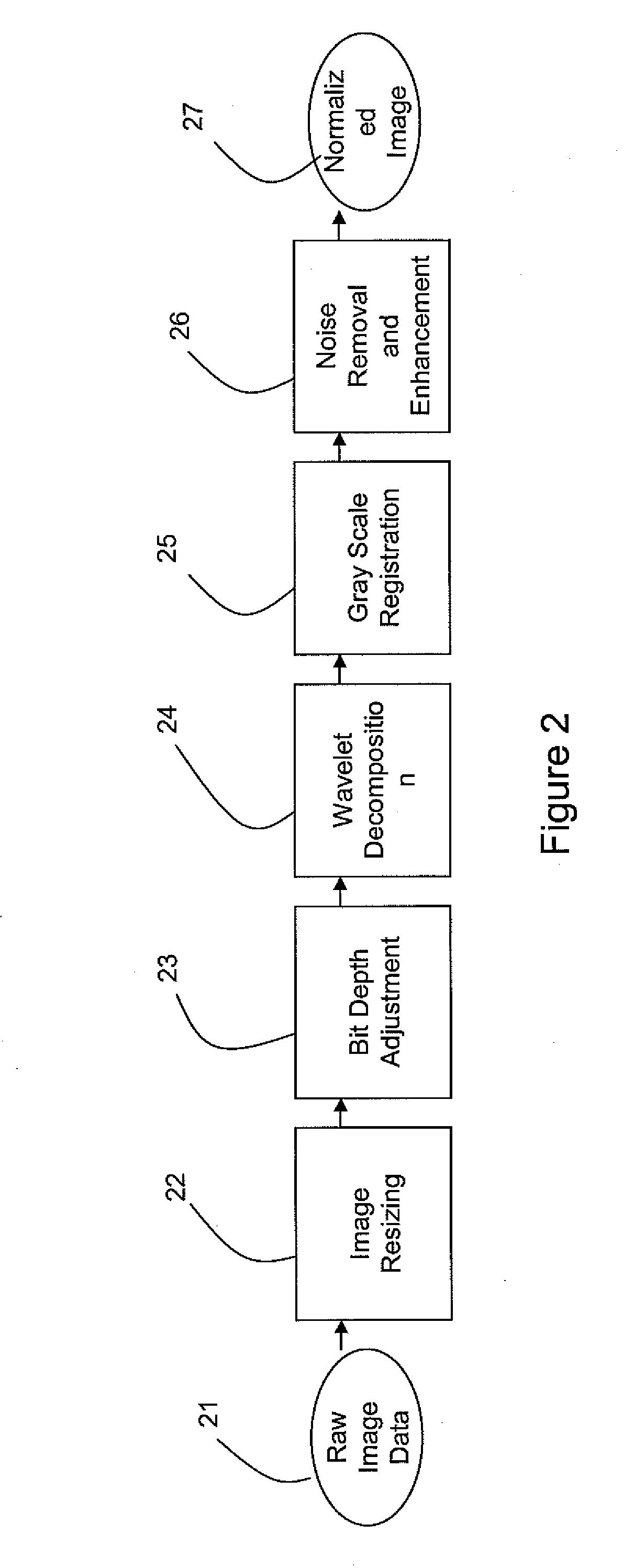Feature based neural network regression for feature suppression
a neural network and feature technology, applied in image enhancement, image analysis, instruments, etc., can solve the problems of difficult localization of other objects, difficult chest radiograph detection, and difficult detection of lung nodules, and achieve the effect of reducing the number of chest radiographs
- Summary
- Abstract
- Description
- Claims
- Application Information
AI Technical Summary
Problems solved by technology
Method used
Image
Examples
Embodiment Construction
[0011]The developed bone suppression technique according to various embodiments of the invention may use dual energy (DE) data to generate a regression model for predicting the bone image. Along with a regression model that may be based on a set of robust, extracted features, the regression model may use a multi-layer perceptron (MLP) neural network architecture. Multiple feature representations may be used. Particular features may include, for example, in an exemplary embodiment of the invention:[0012]A 5 scale (redundant) wavelet decomposition using a third-order basic spline (B-spline) wavelet (this may be used to yield seven features, where five are from the details, one is from the low-pass residual, and the final is the original image);[0013]Five shape-index images, one for each of five scales, derived from harmonic second derivatives;[0014]Gaussian 4-jet at five separate scales.
[0015]To further explain the above concepts, the multi-scale representation provided by the wavelet...
PUM
 Login to View More
Login to View More Abstract
Description
Claims
Application Information
 Login to View More
Login to View More - R&D
- Intellectual Property
- Life Sciences
- Materials
- Tech Scout
- Unparalleled Data Quality
- Higher Quality Content
- 60% Fewer Hallucinations
Browse by: Latest US Patents, China's latest patents, Technical Efficacy Thesaurus, Application Domain, Technology Topic, Popular Technical Reports.
© 2025 PatSnap. All rights reserved.Legal|Privacy policy|Modern Slavery Act Transparency Statement|Sitemap|About US| Contact US: help@patsnap.com



